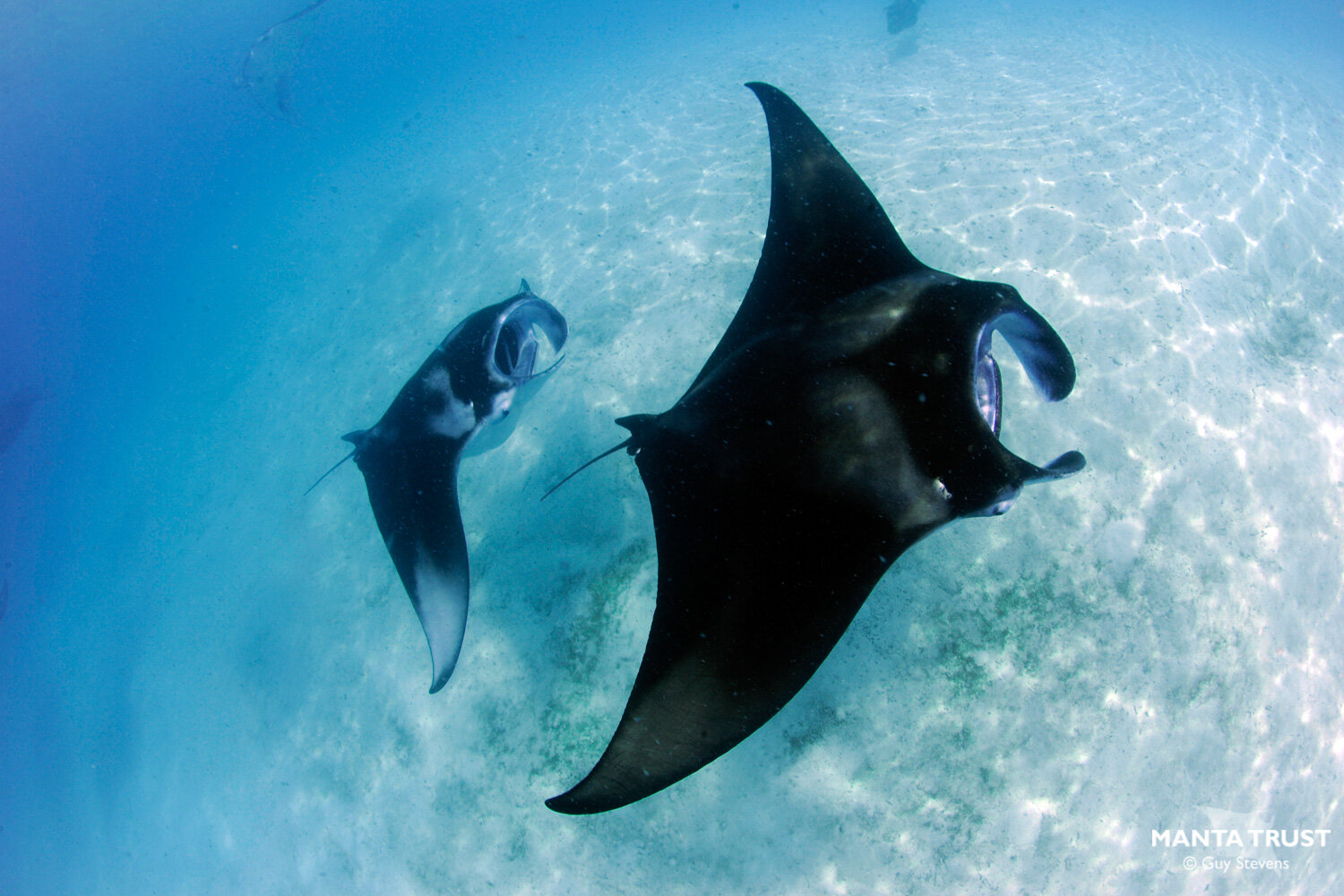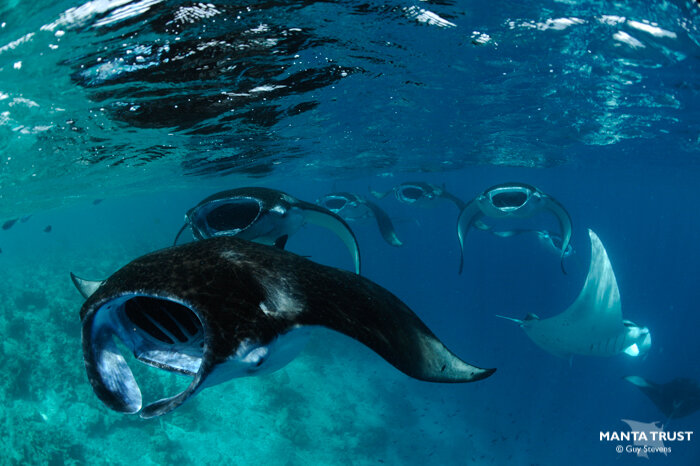
OVERVIEW
IUCN Red List classification.
The reef manta ray (Mobula alfredi) is one of the largest and most iconic marine species. Because reef manta rays frequent relatively shallow waters along the coastal reefs of continents and oceanic islands, they are more commonly encountered by divers and snorkellers than their oceanic manta ray cousins.
Reef manta rays are widely distributed throughout the tropical and subtropical regions of the Indian and West Pacific Ocean. However they are also threatened by targeted fisheries driven by the demand for their gill plates. Climate change is also likely to affect the abundance of the zooplankton prey upon which this species relies.
DISC WIDTH
Average: 300-350cm
Max: 431cm
WEIGHT
Max: ~844kg
LIFESPAN
Likely to be around 40 years
KEY FEATURES
Transition between white and black markings on dorsal surface blurred along colour boundary forming more of a ‘V’ in black.
If present, ventral spots often between branchial gill slits and across training edge of pectoral fins and abdominal region.
Tail equal to or shorter than its disc width.
Large gill plates with fused lateral lobes and rounded terminal lobe. Plates are coloured uniformly black, although occasionally completely white.

GALLERY

LATEST RESEARCH
To see publications on manta and devil rays from the Manta Trust and our affiliate projects please click here:
WANT TO LEARN ABOUT OTHER MOBULID SPECIES?






























